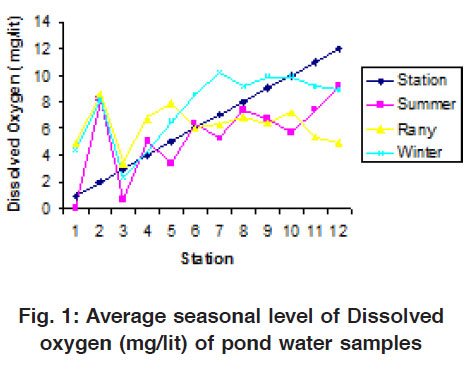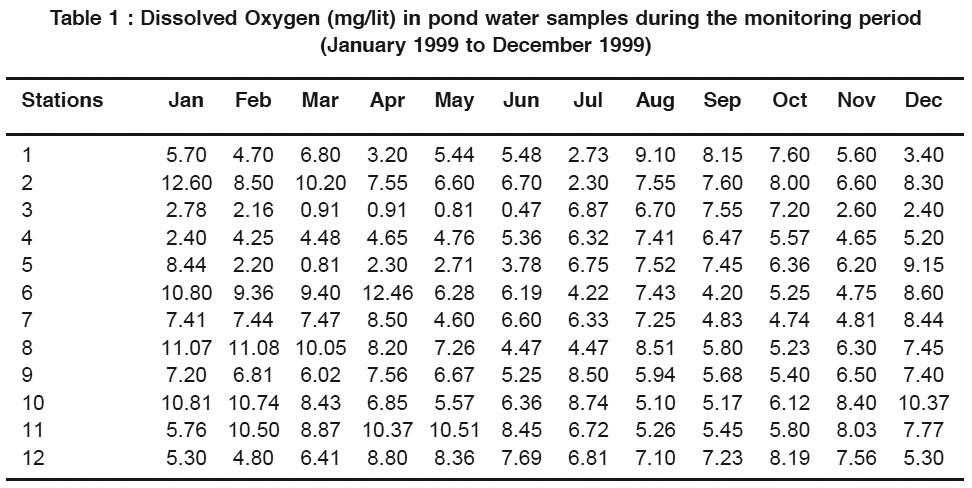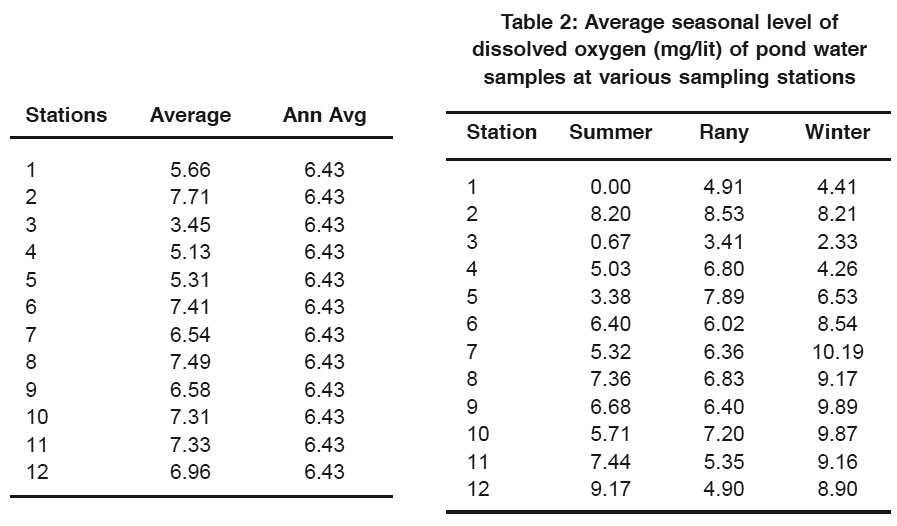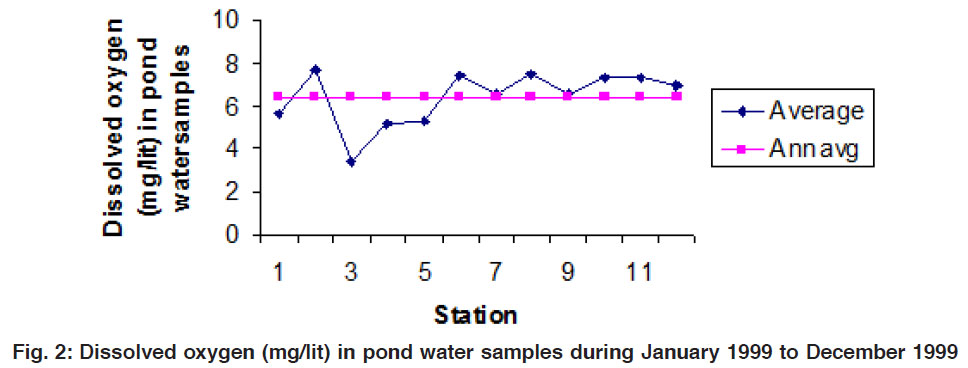Study of dissolved oxygen present in the underground water of Nipani town
Yashodhara Varale1 * and Shashikant Wagh1
1
Department of Environmental Study,
Dr. Ambedkar College of Commerce and Economics,
Mumbai,
400 031
India
DOI: http://dx.doi.org/10.12944/CWE.4.2.26
The ground water samples were taken from twelve tube wells from nipani town and analysed every month throughout the year. So, we have studied levels of dissolved oxygen in underground water. DO content was always above 5 mg/litre and went up to 12.56 mg/litre
Copy the following to cite this article:
Varale Y, Wagh S. Study of dissolved oxygen present in the underground water of Nipani town. Curr World Environ 2009;4(2):421-423 DOI:http://dx.doi.org/10.12944/CWE.4.2.26
Copy the following to cite this URL:
Varale Y, Wagh S. Study of dissolved oxygen present in the underground water of Nipani town. Curr World Environ 2009;4(2):421-423. Available from: http://www.cwejournal.org/?p=1006
Download article (pdf) Citation Manager Publish History
Select type of program for download
| Endnote EndNote format (Mac & Win) | |
| Reference Manager Ris format (Win only) | |
| Procite Ris format (Win only) | |
| Medlars Format | |
| RefWorks Format RefWorks format (Mac & Win) | |
| BibTex Format BibTex format (Mac & Win) |
Article Publishing History
| Received: | 2009-06-12 |
|---|---|
| Accepted: | 2009-08-17 |
Introduction
Industrialization and urbanization created serious problems of water pollution of surface water i.e. ponds, underground water tube-wells. In developing countries like India, this problem has become acute day by day.
In the present study, the levels of DO were studied in the vicinity of Halsiddhanath sugar factory located at Nipani. The underground water sample were taken from twelve underground tube wells in the glass bottles by following standard procedure. Sample were taken from twelve underground tube wells which are located at 1. Bhim Nagar, 2. Nagoba lane, 3.Kharade lane, 4. Namar mal, 5. Shivaji Nagar, 6. Andolan Nagar, 7. Kmgar Chowk, 8.Ambale polt, 9. Mestri Nagar, 10. Ramling Temple, 11. Mestri Nagar, 12. Bhise lane. The samples were collected every month throughout the every year and analyzed in laboratory for the levels of DO.
Results and Discussion
Dissolved Oxygen
The average concentration of oxygen is 20.90 %. DO content was always above 5mg/litre and went up to 12.56 mg/lit. DO values were extremely low at Ashray Nagar and Pratibha Nagar and confluence of Andolan Nagar and Azad Nagar (Sample sites 3, 4 and 5) because of high loads of organic matter in the present study.
Layout Do observed during rainy season and further reduction in summer at various sampling stations is due to more of waste and clean natural fear of surface waters. (Table 1 & 2).
 |
Figure 1: Average seasonal level of Dissolved oxygen (mg/lit) of pond water samples Click here to view figure |
 |
Table 1 : Dissolved Oxygen (mg/lit) in pond water samples during the monitoring period (January 1999 to December 1999) Click here to view table |
 |
Table 2: Average seasonal level of dissolved oxygen (mg/lit) of pond water samples at various sampling stations Click here to view table |
 |
Figure 2: Dissolved oxygen (mg/lit) in pond water samples during January 1999 to December 1999 Click here to view figure |
References
- Lohani B.N., (1981), Water quality indices in water pollution and Management review (Ed. Varshney, C.K.).
- Pawar N.J., Hydrochemical facies of shallow ground water from the Poona area, Maharashtra hydrology of Volacanic terrain (Ed. Power K.B and Thigale, S.S University of Poona.(1986) 137-153.
- Peter A.K., Sources and classification of water pollutions, in industial pollution (Ed. N.Irving Sax), Van Nostrand Reinhold Co., Newyork. (1974).
- Petly John W.A., Water quality in a stressed e nvironment, Burgess publishing Co., Minnesota. (1972).
- Raghunath H.M., Ground water. Wiley Eastern Ltd. New Delhi, India. (1988).
- Ramteke D.S and Moghe C.A., Manual on water and waste water analysis, NEERI Nagpur,(1955) 135.
- Rao C.B. On the distribution of algae in a group of 6 ponds, J.Ecol.(1955) 43, 291-308.
- Rao S.R, and Shah S.M. Elemental concepts in the environmental samples BARC, Mumbai. (1976).
- Salomons W., Van Driel W, Kridijk. H. And Boxma, R Effects of waste water disposal on ground water. Proc.Exeter.Symp., IHAS,(1982) 39, 25-29.
- Smidth R. Wiechers S.C., Elimination of toxic metals from waste water by an integrated waste water treatment, water reclaimation system. Water, S.A.(1981) 7(1): 65-70.







